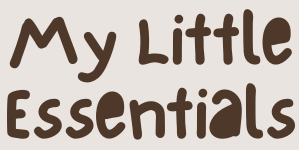'Too Long, Didnt Read'
Contact naps are deeply comforting for babies and for parents too. But when you’re ready for more independence (and a bit more freedom), you can gently transition your baby to nap soundly in their crib. By recreating the warmth, rhythm, and security of your embrace, you can help your little one feel just as safe sleeping on their own. Tools like Lullabear, with its familiar heartbeat and soothing sounds, make that shift feel seamless, never scary.
Quick Summary
- Contact naps are biologically normal and emotionally nurturing.
- Babies nap longer in arms because of warmth, scent, and rhythmic comfort.
- Transition slowly by recreating those same sensations in the crib.
- Predictable sound and routine help babies recognize it’s time to rest.
- Focus on progress, not perfection, every little win counts.
Why Babies Love Contact Naps (Full Post)
If your baby only naps on you, take a deep breath, you’re not doing anything wrong. Babies are born craving closeness. Your heartbeat, warmth, and scent are their first “home.”
Studies show that skin-to-skin contact helps regulate your baby’s breathing, temperature, and stress levels. It’s why contact naps often last longer, your baby feels completely safe.
At Lullabear, we call this the comfort connection: the powerful link between your touch and your baby’s calm. The goal isn’t to break that bond, it’s to build on it in a new, gentle way.
Why You Might Want to Transition
As your baby grows, you might find yourself needing more hands-free time to rest, reset, or just drink a warm cup of coffee. Transitioning to crib naps doesn’t mean losing that closeness, it’s simply teaching your baby that comfort exists in more than one place.
Research from the Sleep Foundation suggests that once babies associate their crib with safety, they often nap longer and more deeply. But the secret lies in a slow, soothing transition — never a sudden one.
Step-by-Step Guide to Ending Contact Naps (the Gentle Way)
1. Start Small — One Nap at a Time
Begin with the easiest nap of the day, usually the morning one. Let your baby continue contact napping for the others. This way, you build confidence without overwhelming them.
2. Recreate the Feeling of Contact
Your baby isn’t resisting independence — they’re missing your warmth and rhythm. Here’s how to make the crib feel familiar:
- Warm the sheet slightly before laying them down (then remove the heat source).
- Place a worn but clean T-shirt near the mattress so your scent lingers.
- Use Lullabear’s heartbeat sound to mimic your pulse — it’s one of the fastest ways to trigger calm and recognition.
3. Keep the Routine Identical
Babies love patterns. Use the same nap cues they already know: dim lights, gentle rocking, and the same soothing sound.
According to the American Academy of Pediatrics, babies sleep best when their environment feels familiar and predictable, that’s how they learn what “rest time” means.
4. Use Sound as a Comfort Bridge
Sound is powerful, it tells the body “you’re safe now.”
White noise and soft lullabies can remind your baby of the safety of contact sleep. One study found that 80% of newborns fell asleep within five minutes when exposed to white noise compared to 25% without it.
Lullabear goes one step further by blending heartbeat, shushing, and lullaby sounds into one comforting rhythm. It’s a sound that feels like you, helping your baby connect contact sleep to crib sleep without tears.
5. Stay Close (for Now)
In the early days, sit beside the crib. Rest your hand on your baby’s chest. Whisper softly. Gradually step back over days or weeks.
Independence doesn’t come from separation, it comes from knowing you’re still there.
6. Celebrate Small Wins
Some naps will still happen in your arms, and that’s okay. Transitioning isn’t about “breaking habits”; it’s about expanding comfort zones. Each peaceful crib nap, even a short one, is a sign of growing trust.
When to Pause and Try Again
If naps suddenly shorten or your baby becomes more upset than usual, pause. Return to contact naps for a few days. Then reintroduce crib naps once your baby feels secure again. Progress is never lost, it’s just taking a rest, too.
The Lullabear Takeaway
Contact naps are one of the sweetest chapters of early parenthood. You don’t have to “stop” them — just evolve them. By keeping your baby’s senses of warmth, rhythm, and safety alive through tools like Lullabear, your baby learns that comfort doesn’t end when your arms open.
It simply moves with them — from your chest to their crib. 💛


